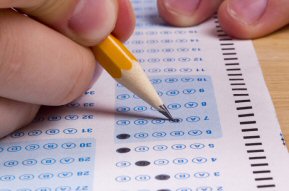
The Need for Testing:
Knowing the factors that affect the learning level of every student is important in providing the right type of lessons. To identify the things that stand along the way to successful learning, testing is necessary. Perhaps, the most widely known test among parents of early education pupils is the intelligence test. Most commonly used, they are intended to identify specific learning disabilities that may hinder learning. Additionally, tests for students are administered to help eliminate and lower problems that come along with the students’ cognitive difficulties. Another important factor is that classrooms with the most common testing area help in the identification of class members who are underachieving and may help them better develop with the aid of remediation or tutorials.
Developmental tests most commonly administered to first graders are used to give hints on the child’s strengths and weaknesses. Speech tests are also used to assess the type of intervention needed for those that suffer from speech difficulty. Inventories on the behavior of school children as given by the school counselors help teachers design their classroom management strategies. In addition, tests that measure abilities are intended to identify students who are gifted so they can be properly provided with enrichment activities.
Tests have long been utilized to uncover reasons students perform well or poorly in class. Despite the kind of reputation it has, a test helps the teacher in assisting the child to develop their full potentials.
Understanding Criterion Referenced Test
 Otherwise known as CRT, criterion referenced tests are designed to measure how well students have learned a certain body of knowledge or subject and the skills associated with such. In everyday situations, the most common examples of this test can be the multiple choice exams people take when they apply for a driver’s license. This means that in order to pass, they must know, to a certain degree, things that deal with the specific subject which is driving. Academically, it is a type of test that measures how well a student has learned a material taught in a certain school year or semester.
Otherwise known as CRT, criterion referenced tests are designed to measure how well students have learned a certain body of knowledge or subject and the skills associated with such. In everyday situations, the most common examples of this test can be the multiple choice exams people take when they apply for a driver’s license. This means that in order to pass, they must know, to a certain degree, things that deal with the specific subject which is driving. Academically, it is a type of test that measures how well a student has learned a material taught in a certain school year or semester.
 Otherwise known as CRT, criterion referenced tests are designed to measure how well students have learned a certain body of knowledge or subject and the skills associated with such. In everyday situations, the most common examples of this test can be the multiple choice exams people take when they apply for a driver’s license. This means that in order to pass, they must know, to a certain degree, things that deal with the specific subject which is driving. Academically, it is a type of test that measures how well a student has learned a material taught in a certain school year or semester.
Otherwise known as CRT, criterion referenced tests are designed to measure how well students have learned a certain body of knowledge or subject and the skills associated with such. In everyday situations, the most common examples of this test can be the multiple choice exams people take when they apply for a driver’s license. This means that in order to pass, they must know, to a certain degree, things that deal with the specific subject which is driving. Academically, it is a type of test that measures how well a student has learned a material taught in a certain school year or semester.
CRT in mathematics includes questions that are supposed to have been taught during one’s arithmetic class. The test does not include items that aren’t a part of the course syllabus for a certain term. When learned well, most students could pass the exams and be given a certain point considered a “pass” mark.
A standardized CRT sets a cut-off point as agreed upon by a set of experts on the subject area. In contrast, those that are used in the classroom have the passing point set by the teacher. It should be made understood, then decided by a committee or the subject teacher alone. The passing limits are often decided subjectively. Commonly, when the subject matter takes part in licensure exams students must take after graduation, passing marks are set at 50 to 75 percent of the total number of items. This is done to ensure that class members have retained as much information as their professions or endeavors demand.
Experts have defined CRT as a relative value signifying one’s performance placed against a standard. They also agreed on the fact that most of the quizzes students take in school are criterion referenced in nature. It is considered as the easiest way to know if students have learned the materials or subjects taught.
Advantages of CRT
 Criterion referenced tests in the classroom (when well prepared and aligned with the subject’s goals), help teachers identify points where students need extra assistance or review. CRT sees how students performed against the standard, comparing them to themselves alone, not with peers. This brings many advantages such as:
Criterion referenced tests in the classroom (when well prepared and aligned with the subject’s goals), help teachers identify points where students need extra assistance or review. CRT sees how students performed against the standard, comparing them to themselves alone, not with peers. This brings many advantages such as:
 Criterion referenced tests in the classroom (when well prepared and aligned with the subject’s goals), help teachers identify points where students need extra assistance or review. CRT sees how students performed against the standard, comparing them to themselves alone, not with peers. This brings many advantages such as:
Criterion referenced tests in the classroom (when well prepared and aligned with the subject’s goals), help teachers identify points where students need extra assistance or review. CRT sees how students performed against the standard, comparing them to themselves alone, not with peers. This brings many advantages such as:- A classroom-based CRT enables the teacher to exactly point students’ weaknesses. Making test result as a jump off point, teachers can now see easily which part of the lecture or lesson needs more elaboration. When giving a test on verbs for example, the teacher whose students scored lower in irregular verbs indicates that a remedial session on the topic is needed. CRT in short gives teachers the exact point the students are having a hard time with.
- Also, since students’ learning is measured against the standard or their previous academic performance, CRT makes it easier for the teacher to track individual progress. For example, a diagnostic test given at the beginning of the term can serve as a guide as to where the class should start and how broad are the students’ knowledge on the subject. Towards the end of the term, the goal of having students to master the areas of knowledge taking part in the subject studied has to be determined. When a CRT achievement test was administered at the end of the semester and a certain student gets the score of 89 percent, a big leap from that of the diagnostic test of 30 percent, it is clear that the student has prospered in the level of knowledge he or she has on the subject matter.
- Lastly, CRTs are helpful in building self-esteem. This is because students’ performance is measured against their own and not with others, paving way to wider opportunities of scoring higher that they previously did. Since no two students are alike, the use of CRTs in classrooms can help meet individual needs for instruction and remediation, helping students discover what they have achieved, and develop higher learning skills.
The following are the ways to use CRT in the classroom:
1. Set goals clearly at the beginning of a topic.
Experts agree that setting goals and making students understand them before starting a new lesson help them understand the purpose of the activities. Goals and lesson objectives provide students with the idea map as to where topics are headed. This, in turn, helps them condition their thoughts and work their way to achieving the standard set. If the goal of the lesson about adjectives using three or more descriptive words when constructing a single sentence, the assessment or test at the end of the lesson must measure this condition. If majority of the students scored lower than what was expected, the lesson has to be re-taught.
Experts agree that setting goals and making students understand them before starting a new lesson help them understand the purpose of the activities. Goals and lesson objectives provide students with the idea map as to where topics are headed. This, in turn, helps them condition their thoughts and work their way to achieving the standard set. If the goal of the lesson about adjectives using three or more descriptive words when constructing a single sentence, the assessment or test at the end of the lesson must measure this condition. If majority of the students scored lower than what was expected, the lesson has to be re-taught.
2. Make tests less threatening.
Tests are often associated with causes of student anxiety and possible negative reinforcements. This, however; can be designed in a way every class member will deem it as a method to assess their learning. Before giving tests, inform students that it is intended to measure how well they have retained information from previous lessons, not a basis for punishments. When students are positive about test taking, they tend to do better and concentrate more. This makes them function better than when stressed with what penalties await them. Additionally, tests can be integrated into everyday lessons to make it part of the routine. Equally essential, frequent yet shorter tests are less demanding for students, so they can study the important points longer than chapter tests. It should be remembered that tests are to be given for the purpose of identifying weaknesses or lessons that are less understood, and not as a method for identifying those that deserve punishments. When teachers are able to identify the points by which students fall short, it is easier to design review lessons and bridge topics.
Tests are often associated with causes of student anxiety and possible negative reinforcements. This, however; can be designed in a way every class member will deem it as a method to assess their learning. Before giving tests, inform students that it is intended to measure how well they have retained information from previous lessons, not a basis for punishments. When students are positive about test taking, they tend to do better and concentrate more. This makes them function better than when stressed with what penalties await them. Additionally, tests can be integrated into everyday lessons to make it part of the routine. Equally essential, frequent yet shorter tests are less demanding for students, so they can study the important points longer than chapter tests. It should be remembered that tests are to be given for the purpose of identifying weaknesses or lessons that are less understood, and not as a method for identifying those that deserve punishments. When teachers are able to identify the points by which students fall short, it is easier to design review lessons and bridge topics.
3. Set limits on test coverage.
Perhaps the most common mistake teachers can commit is going beyond what the students have mastered so far. When this happens, setting a valid standard can be difficult if not impossible. Educators have to make sure they construct tests that are focused on a certain area of knowledge. When giving tests, it is essential to define first the coverage of the assessment and what information on learning is intended to be extracted. For broader topics like nouns, it is wise to categorize the test into parts to master on its usage. Forms and inflection can be clearly seen as teachers mark and record scores of the papers. Remember not to go beyond what the topic has encompassed.
Perhaps the most common mistake teachers can commit is going beyond what the students have mastered so far. When this happens, setting a valid standard can be difficult if not impossible. Educators have to make sure they construct tests that are focused on a certain area of knowledge. When giving tests, it is essential to define first the coverage of the assessment and what information on learning is intended to be extracted. For broader topics like nouns, it is wise to categorize the test into parts to master on its usage. Forms and inflection can be clearly seen as teachers mark and record scores of the papers. Remember not to go beyond what the topic has encompassed.
4. Develop discrimination through multiple choice tests.
 Considered by many students as the easiest, this type of exams cause lesser anxiety and give students hint on the correct choices. This, however; should be made patiently, making sure every item requires the students to think and discriminate choices to arrive at the correct answers. Obviously correct answers, as a result of poor item analysis, defeat the purpose of measuring how much the students have learned from the lessons. Additionally, this enables teachers to design tests that compel students to make intelligent choices, going beyond answering literal questions. Equally important, CRTs of multiple choice design help students develop the ability to use context in understanding test items. In language classes, for example, this can be done by providing choices from which they can choose the one that best completes the sentence patterns.
Considered by many students as the easiest, this type of exams cause lesser anxiety and give students hint on the correct choices. This, however; should be made patiently, making sure every item requires the students to think and discriminate choices to arrive at the correct answers. Obviously correct answers, as a result of poor item analysis, defeat the purpose of measuring how much the students have learned from the lessons. Additionally, this enables teachers to design tests that compel students to make intelligent choices, going beyond answering literal questions. Equally important, CRTs of multiple choice design help students develop the ability to use context in understanding test items. In language classes, for example, this can be done by providing choices from which they can choose the one that best completes the sentence patterns.
 Considered by many students as the easiest, this type of exams cause lesser anxiety and give students hint on the correct choices. This, however; should be made patiently, making sure every item requires the students to think and discriminate choices to arrive at the correct answers. Obviously correct answers, as a result of poor item analysis, defeat the purpose of measuring how much the students have learned from the lessons. Additionally, this enables teachers to design tests that compel students to make intelligent choices, going beyond answering literal questions. Equally important, CRTs of multiple choice design help students develop the ability to use context in understanding test items. In language classes, for example, this can be done by providing choices from which they can choose the one that best completes the sentence patterns.
Considered by many students as the easiest, this type of exams cause lesser anxiety and give students hint on the correct choices. This, however; should be made patiently, making sure every item requires the students to think and discriminate choices to arrive at the correct answers. Obviously correct answers, as a result of poor item analysis, defeat the purpose of measuring how much the students have learned from the lessons. Additionally, this enables teachers to design tests that compel students to make intelligent choices, going beyond answering literal questions. Equally important, CRTs of multiple choice design help students develop the ability to use context in understanding test items. In language classes, for example, this can be done by providing choices from which they can choose the one that best completes the sentence patterns.
5. Scaffold knowledge between topics.
It should be understood that tests are not intended to purely grade students, but instead to assess how much they have progressed from the first lesson to the present. To be able to come up with reliable achievement tests at the end of the term, it is essential that students can link one topic to another. This can be done easily by scaffolding knowledge of the topics one after the other. Simply stated, it is essential to give a review of the previous lessons, especially those items the students have difficulty answering based on the previous assessment. Again, it should be noted that items missed are not intended to be ignored, but rather a point of a future review. As topics of the entire term properly connect with one another, it is easier to design a criterion reference achievement test that covers all topics from the beginning to the last lesson of the term.
It should be understood that tests are not intended to purely grade students, but instead to assess how much they have progressed from the first lesson to the present. To be able to come up with reliable achievement tests at the end of the term, it is essential that students can link one topic to another. This can be done easily by scaffolding knowledge of the topics one after the other. Simply stated, it is essential to give a review of the previous lessons, especially those items the students have difficulty answering based on the previous assessment. Again, it should be noted that items missed are not intended to be ignored, but rather a point of a future review. As topics of the entire term properly connect with one another, it is easier to design a criterion reference achievement test that covers all topics from the beginning to the last lesson of the term.
Concluding Thoughts
CRTs are useful for teachers in many ways. Flexible yet focused, CTRs are used for teachers to monitor students’ individual progress based on everyday activities in the classroom. A quick way to measure how much students have learned and mastered the concepts and skills, it is a reliable way to compare class members learning against course objectives. With most of the objectives prescribed by the school system, CRTs in the classroom level help determine how effective the curriculum design is in producing the desired academic results.
CRTs are useful for teachers in many ways. Flexible yet focused, CTRs are used for teachers to monitor students’ individual progress based on everyday activities in the classroom. A quick way to measure how much students have learned and mastered the concepts and skills, it is a reliable way to compare class members learning against course objectives. With most of the objectives prescribed by the school system, CRTs in the classroom level help determine how effective the curriculum design is in producing the desired academic results.
No comments:
Post a Comment